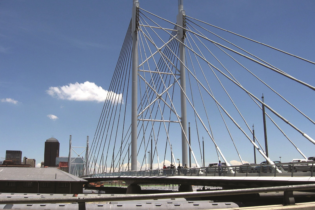Phase II of Lesotho Highlands water is expected to deliver 465 million cubic metres a year to South Africa by 2020. Lesotho’s election results this week have seen the country experiment with its first coalition government when business ties with South Africa are slow and phase II of the Lesotho Highlands water project begins to gain traction.
South Africa will not want the ongoing political upheaval to negatively affect a project that delivers 780 million cubic metres per annum. The crucial phase II of the project is expected to deliver water from 2020 and gradually increase to an additional 465 million cubic metres per annum. The water project with Lesotho is important as SA embarks on an ambitious R3.2 trillion infrastructure development programme and as drastic urbanisation places more pressure on local authorities to deliver improved services. But more than that, it will be crucial for SA’s ongoing water security as some industries are already affected by water shortages. An independent consultant who works for the Trans-Caledon Tunnel Authority (TCTA) has warned that SA’s mining industry is already being constrained by water shortages and if acid mine water is not desalinated, the Upper Vaal could go into deficit by 2015 and mining in six provinces would be affected. The last time SA had a serious drought was in 1992. The state-owned TCTA aims to facilitate water security through the planning, financing and implementation of bulk raw water infrastructure, in the most cost effective manner that benefits water users, but one of its major projects is the Lesotho Highlands Water Project (LHWP). It diverts water from the Senqu River System in Lesotho to South Africa’s economic hub, the water-stressed Gauteng region. SA’s High Commissioner to Lesotho, Happy Mahlangu, says ties between Lesotho and SA are not at their best. He hopes that with the elections are out of the way, far better traction between the countries can be achieved. “If there is peace, it will encourage business between the countries,” he says. “There are opportunities in tourism, agriculture, agri-business. But there is not a strong relationship.” He is, however, very excited about the phase II Highlands project and says the pricing of infrastructure is busy happening at the moment, but the new dam is critical for SA and Lesotho, especially as South Africa is looking for further water security.The Lesotho Highlands Water Project (LHWP) was instituted as a bi-national project spanning the borders of South Africa and Lesotho in accordance with a treaty signed in 1986 with the Phase II treaty signed in 2011.
At the peak of construction, about 7 000 people were employed. The construction ended in 2006 after R1,2bn was spent on the Katse dam. Construction of phase II is due to start in 2014 and will cost some R9bn. The Phase II project entails the construction of the Polihali Dam; a transfer tunnel from Polihali Dam to the Muela hydropower complex; expansions to the existing Muela hydropower complex; as well as advancing the infrastructure, environmental and social development programs in Lesotho. Phase II water delivery is expected to come on line in accordance with the treaty between South Africa from January 2020. Although the main purpose of the LHWP is to provide water to South Africa, there is a feasibility study under way to look at a 1200 Megawatt (MW) pumped storage scheme at Kobong with 1000MW being available for export to SA, according to a spokesman form the Lesotho Highlands Water Commission, which oversees the project. Eskom is currently busy constructing the 1332 MW Ingula pumped storage scheme in the Drakensberg. Eskom uses expensive Open Cycle Gas Turbines (OCGT) with a capacity of 1300 MW to meet peak electricity demand between 17h00 and 21h00. Pumped storage schemes use two dams with water flowing from the top dam to the bottom dam during peak demand times to generate electricity, while the water is then pumped back up to the top dam when electricity demand is low, normally between midnight and 05h00. This is a far cheaper generation method than power produced from OCGT. Source: businesslive







